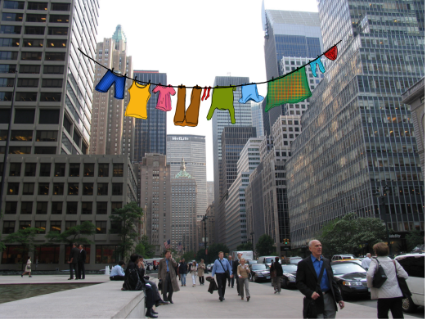 |
| Idee und Konzeption/Idea and Conception: A n n e g r e t H e i n l |
26 Künstler aus 7 Länder / 26 artists from 7 countries
Allemagne • Germany • Deutschland
Annegret Heinl • Michael Hoepfel • Margret Holz • Susanne Kunjappu
Isabel Oestreich • Jürgen Olbrich • Gisela Weimann • Ila Wingen
Angleterre • England
Betsy Tyler-Bell & David Bell
Espagne • Spanien • Spain
Angiola Bonanni
France • Frankreich
Anne Guerrant • Christophe Guery • Catherine Herbertz • Brigitte Kohl
Sarah Monnier • Évelyne Rogniat • Jean-Pierre Treille
Roumanie • Romania • Rumänien
Emil Dobriban • Gyongyi Karoly-Zold • Andor Komives • Eniko Lini
Mira Marincas • Lucian Muntean
Pays-Bas • Netherlands • Niederlande
AnnA van Breest Smallenburg
Pologne • Poland • Polen
Wojtek Rózynski
☛ Aquarium Compagnie
☛ PASSAGES - Aquarium Compagnie
☛ Annegret Heinl - BETWEEN
☛ www.aheinl.de
☛ Facebook - Aquarium Compagnie
PASSAGEN • Konzept
Zwischen Himmel und Erde schweben • zwischen Furcht und Hoffnung schweben • zwischen zwei Stühlen sitzen • zwischen Heut’ und Morgen liegt eine lange Frist
Der Mensch steht in elementarer Beziehung zum Raum: Er befindet und bewegt sich von Anfang an im Raum und kann sich ihm nicht entziehen. Raumerfahrung ist existenziell also gegeben. Zugleich aber werden Räume durch Handlungen auch geschaffen und strukturiert, so dass sie nicht als statisch, sondern als dynamisch zu betrachten sind. Im Kantischen Sinne liegt unserer sinnlichen Wahrnehmung die Vorstellung von Raum und Zeit zu Grunde. Sie sind notwendige Voraussetzung für die Erfahrung der äußeren Welt.
Im Laufe der Geschichte haben sich unsere Vorstellungen vom Raum gewandelt und verschoben. Die Unterschiede der Raumkonzepte sind verknüpft mit den jeweiligen mathematischen und philosophischen Ansätzen, auf denen sie beruhen. Im allgemeinen Gebrauch basiert Orientierungsvermögen einerseits und Fähigkeit der Formgebung und des Größenvergleichs andererseits auf Ordnungsstrukturen und Lagebeziehungen im Raum. Die Dreidimensionalität beschreibt den Raum als Ausdehnung, in der den beweglichen Dingen ein Platz zugewiesen wird. Er ist Behälter (Container, Speicher, Territorium) und Ordnungsstruktur. Betrachtet man die Beziehungen der Dinge und Orte zueinander, dann definiert sich der Raum nicht mehr als statische Größe, sondern als Struktur aus Relationen, so zu sagen als Zwischenraum und steht in einem Handlungszusammenhang.
PASSAGES • Concept
Floating between sky and earth; hovering between fear and hope; shifting from one chair to another; allowing time to pass away between today and tomorrow.
Man has a fundamental relationship with space: being there or moving, he cannot avoid it. It follows that the spatial state is existential. Put another way, these spaces are created and structured by actions that ensure they are dynamic, not static. In the Kantian sense our sensory perception of experiencing the external world is determined by space and time.
Throughout history, our ideas of space have advanced and changed.
The differences of concepts connected with space are inherent in the mathematics and philosophical approaches on which they are based: the definition of their structures and spatial positions depend on the one hand on their orientation and on the other, their size. Three-dimensionality describes space as a surface defining things in motion. Space is both a container (packaging, contents, position) and a structured system. If one considers the relationship between things and places, space is no longer defined as a static concept but as a relational structure, that is to say as intermediary in the context of action.
A n n e g r e t H e i n l
 |
| o n l i n e © Annegret Heinl 2019 |
 |
| BETWEEN © Annegret Heinl 2019 |
Between heaven and earth Between north and south Between up and down Between east and west Between right and left Between inside and outside Between day and night Between morning and evening Between yesterday and today Between today and tomorrow Between soon and late Between fear and hope Between mountain and valley Between town and country Between black and white Between laughing and weeping Between thick and thin Between dream and reality Between knowing and believing Between reality and possibility Between love and hate Between theory and practice Between liberty and repression Between question and answer Between truth and lies Between good and evil. The dynamic state of being IN BETWEEN gives us perspective and horizon for IDEAS merging ILLUSION IMAGINATION and REALITY. Everywhere we are always intermediate.
The dynamic state of being IN BETWEEN gives us perspective and horizon for ideas merging illusion, imagination and reality. Interspaces imply borderline experience by setting and displacing boundaries; they indicate transitions and movements in space and time. Near by the video refers to experiences of everyday life, which permanently oscillate between fiction and reality in digital age.



